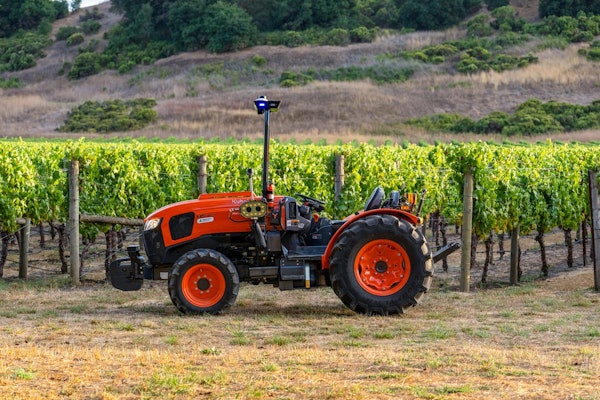It’s a major undertaking to determine the most crucial equipment landscapers need to make a nicely landscaped yard look even better by adding concrete, brick or clay elements. Tools and equipment can vary depending on the types of hardscaping services your company offers, but there are a few key pieces landscapers should not overlook.
Compactors essential for quality
Landscapers and distributors agree a plate compactor is of utmost importance. Additional equipment, such as a skid steer and a transit instrument may also be necessary for hardscape jobs, but a plate compactor is essential for quality, says Jake Mathieu, vice president of Family Tree Landscaping, a landscape design/construction firm in Bangor, Maine.
Jim Carlson, field service representative for Pave Tech, agrees that a plate compactor is critical for proper installation of pavers. The company offers compactors ranging from a minimum of 4,000 pounds up to 14,000 pounds of centrifugal force. The Interlocking Concrete Pavement Institute recommends at least 4,000 pounds of centrifugal force for compaction.
“The size and maneuverability of plate compactors make them ideal for all phases of the installation process,” says Mark Conrardy, sales engineering manager for Wacker. “The vibratory action of the plate will provide better results by compacting the sand under the pavers, as well as forcing the extra top layer in between the pavers for stability and overall quality.”
Wacker offers a series of single direction plates for hardscape applications, ranging from 15.5 to 19.5 inches of baseplate width. An optional urethane pad is also available and bolts easily onto the front of the baseplate to protect the paving stones during final compaction.
Mathieu says it is important to note that compaction circumstances are different for every landscaper’s jobsite location and climate. Typical residential applications, such as sidewalks and patios, can have a uniform final compaction depth from about four to eight inches, says Bob Cramer, director of operations at Pave Tech. For example, if a landscaper decides to go with six inches of compacted base material, this must be the same in all areas to ensure uniformity.
Big (and little) extras that count
The piece of equipment that saves landscapers the most time according to Mathieu is a skid-steer loader. “Skid steers are small and versatile,” he explains, “and they definitely provide the most payback on jobs. If I could hire laborers that cost less than my monthly skid steer payment, I would, but it is just not possible.”
Other components that aid in the creation of durable hardscapes include edge restraints and a device to extract misshapen or damaged pavers, Carlson says. “Edge restraints are most important for the interlocking of units, whether concrete or clay.” The units and the restraints must be able to withstand loads, either vehicular or pedestrian, and also must support a plate compactor.
Pave Tech offers an edge restraint made completely of polyvinyl chloride called Pave Edge, which is unlike most edge restraints that are made of polyethylene and polypropylene. The two latter materials will not always return to their original state once they have been deformed, unlike PVC.
“Edge restraints should withstand everyday loads and move without breaking,” Carlson syas. “You want them to settle and return to their original shape.” If the restraints do not return to their original form, the pavement will get worse over time. Other options include concrete curbing, which Carlson says is expensive and will eventually crack.
For further paver work, Carlson and Mathieu both suggest a device to extract unwanted pavers. Pave Tech offers the paver extractor for such jobs in place of using screwdrivers, which Mathieu says can bust up your knuckles and scratch the pavers.
Another tool Carlson recommends for hardscape jobs is a paver cart. “A paver cart can be used to transport a load of banded or unbanded pavers to the laying edge without having to cut the band and load the pavers, so the person who is laying pavers isn’t always waiting,” Carlson says.
Still, carefully consider your choice of paver cart. Mathieu says he owns one and it has not been entirely helpful for his hardscape work. “Our paver distributor doesn’t stack pavers in a way that they can be hauled away,” he says. Whether a paver cart can be used depends on how the pavers are stacked on a pallet in layers, he says.
Of course, with so many pieces of equipment and tools to choose from, there are other issues besides settling on the best pieces for your business. The main problem many landscapers encounter when wanting to delve into the hardscaping business is the expense.
“The thing about hardscaping is that it’s not an entry-level business,” Mathieu says. “Ultimately it’s easier to start off as a landscaper and gradually make money that you can later invest in hardscaping equipment if you so choose. That’s the thing about equipment – it’s always evolving, so you can add to your equipment as you go.”
Mainly, be sure to examine all your hardscape equipment options and decide on the types of projects you want to offer. If a machine seems like it may be helpful, but is only good for certain jobs, it might be best to look for broader options.






